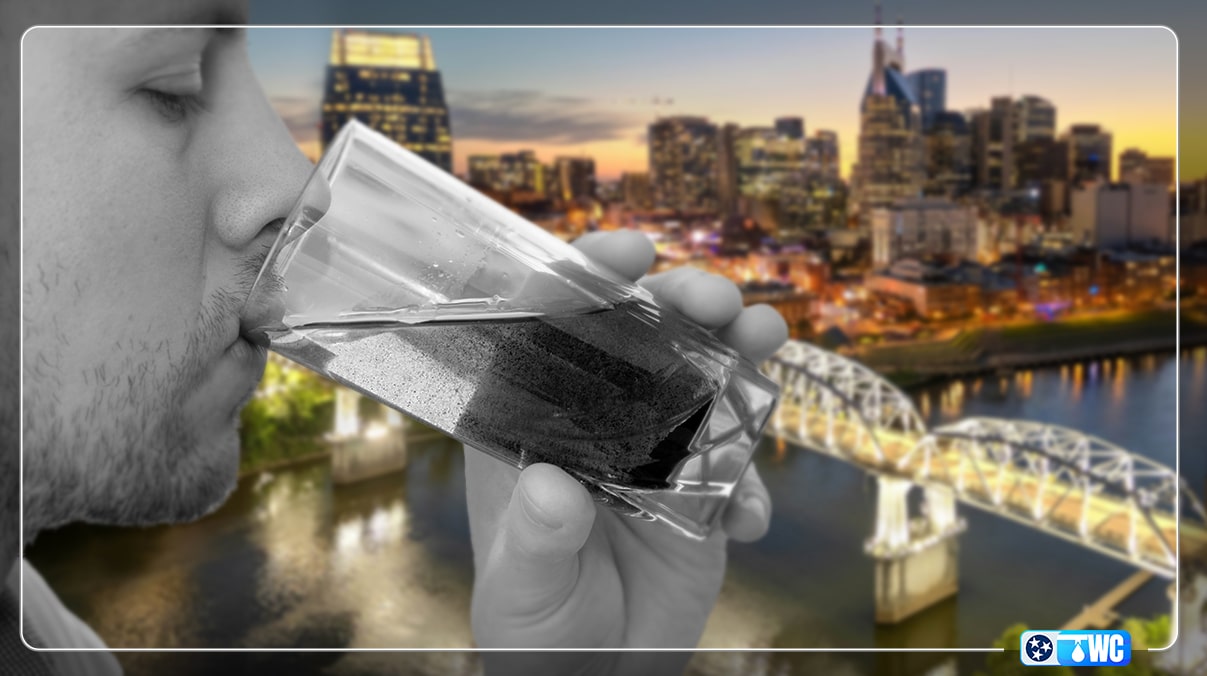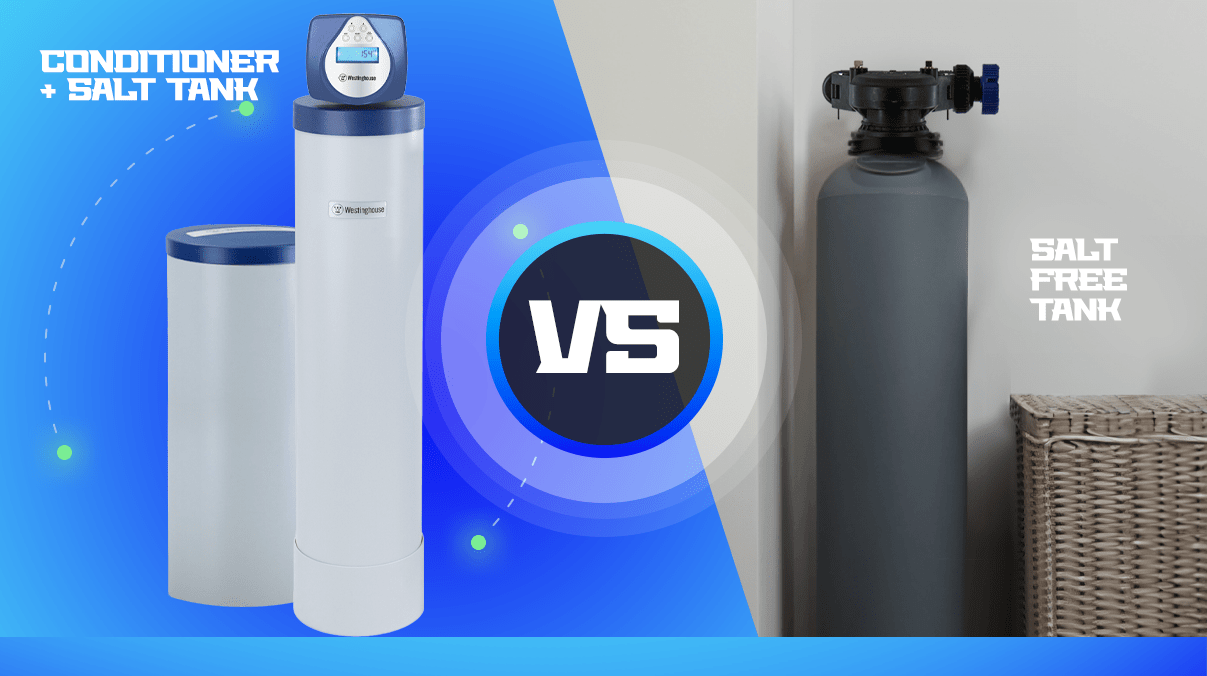When you turn on the faucet, you expect clean, safe water to flow out. However, what if the water you drink, cook with, and bathe in contains contaminants that could harm your health?
According to the Environmental Working Group (EWG), Tennessee’s tap water contains several contaminants that exceed health guidelines, potentially putting millions of residents at risk. In this article, we’ll explore the most prevalent contaminants, their health implications, and how you can protect your family.
The State of Tennessee’s Tap Water
The EWG’s Tap Water Database reveals some alarming findings about the quality of tap water across Tennessee. Although most water utilities comply with federal standards, many contaminants are present at levels that exceed health guidelines set by independent research organizations. Let’s break down the key offenders.
Total Trihalomethanes (TTHMs)
• Found above health guidelines in: 437 utilities
• People served: 7,135,210
• What are TTHMs? TTHMs are a group of chemicals formed when chlorine, used for disinfecting water, reacts with organic matter such as leaves and dirt in the water supply.
Health Effects:
TTHMs are linked to several severe health risks, including:
1. Cancer: Long-term exposure has been associated with an increased risk of bladder cancer.
2. Liver and Kidney Damage: High levels can impair liver and kidney function.
3. Pregnancy Complications: Pregnant women exposed to TTHMs may experience adverse pregnancy outcomes, including low birth weight and preterm birth.
Haloacetic Acids (HAA5)
• Found above health guidelines in: 426 utilities
• People served: 7,059,129
• What are HAA5? Like TTHMs, HAA5 are byproducts of chlorination and form when disinfectants interact with organic matter in the water.
Health Effects:
1. Cancer: Prolonged exposure to HAA5 has been linked to an elevated risk of cancer.
2. Reproductive Issues: Studies suggest that HAA5 can disrupt reproductive health, potentially leading to fertility challenges or complications during pregnancy.
Bromodichloromethane
• Found above health guidelines in: 311 utilities
• People served: 5,887,750
• What is Bromodichloromethane? This chemical is one of the TTHMs and results from water chlorination.
Health Effects:
1. Carcinogenic Risks: Classified as a potential human carcinogen, bromodichloromethane increases the risk of cancers like bladder and colorectal cancer.
2. Liver and Kidney Toxicity: Exposure over time can lead to organ damage, particularly in the liver and kidneys.
Chloroform
• Found above health guidelines in: 311 utilities
• People served: 5,777,240
• What is Chloroform? Chloroform is another chlorination byproduct and a part of the TTHM group.
Health Effects:
1. Cancer: Long-term exposure to chloroform increases the risk of various cancers.
2. Neurological Effects: Can cause dizziness, fatigue, and headaches with significant exposure.
3. Liver and Kidney Damage: Chronic exposure may result in organ toxicity.
Nitrate
• Found above health guidelines in: 369 utilities
• People served: 6,588,602
• What is Nitrate? Nitrate is commonly introduced into water through agricultural runoff, septic systems, and fertilizers.
Health Effects:
1. Blue Baby Syndrome: In infants, high nitrate levels reduce the blood’s ability to carry oxygen, leading to a potentially fatal condition known as methemoglobinemia.
2. Cancer: Prolonged exposure to high levels of nitrate is linked to gastrointestinal cancers.
3. Pregnancy Risks: Pregnant women exposed to nitrate-contaminated water may face higher risks of complications.
Chromium (Hexavalent)
• Found above health guidelines in: 202 utilities
• People served: 6,257,835
• What is Chromium (Hexavalent)? This is a toxic heavy metal that can enter water supplies through industrial pollution or erosion of natural deposits.
Health Effects:
1. Cancer: Hexavalent chromium is a known carcinogen, with long-term exposure increasing the risk of lung, stomach, and other cancers.
2. Organ Toxicity: High levels can damage the liver and kidneys.
3. Skin Irritation: May cause severe allergic reactions and skin irritation in some individuals.
Haloacetic Acids (HAA9)
• Found above health guidelines in: 220 utilities
• People served: 6,441,134
• What are HAA9? HAA9 represents a broader group of haloacetic acids beyond HAA5, formed during disinfection processes.
Health Effects:
1. Cancer: Similar to HAA5, these acids increase the risk of developing cancer over prolonged exposure.
2. Developmental Issues: Emerging studies suggest potential developmental effects in children.
Dibromochloromethane
• Found above health guidelines in: 221 utilities
• People served: 4,514,354
• What is Dibromochloromethane? A chlorination byproduct and member of the TTHM family.
Health Effects:
1. Cancer Risks: Long-term exposure has been associated with bladder and other cancers.
2. Neurological Effects: Potential for cognitive or motor impairments with high exposure levels.
Radium, Combined (-226 & -228)
• Found above health guidelines in: 284 utilities
• People served: 3,970,470
• What is Radium? A radioactive element naturally occurring in certain types of rock formations and found in water due to erosion.
Health Effects:
1. Bone Cancer: Radium exposure increases the risk of bone-related cancers.
2. Radiation Risks: Chronic exposure may result in radiation sickness and long-term damage to tissues.
Chlorate
• Found above health guidelines in: 143 utilities
• People served: 4,389,393
• What is Chlorate? Chlorate forms as a byproduct of disinfection or from industrial pollution.
Health Effects:
1. Thyroid Issues: Chlorate exposure can interfere with thyroid function, particularly in children and pregnant women.
2. Blood Disorders: Prolonged exposure may lead to issues with blood oxygen levels.
What the Federal Standards Don’t Tell You
The Safe Drinking Water Act (SDWA) governs the federal standards for drinking water in the United States, but its limitations leave gaps that could put your health at risk. Here’s what you need to know:
Outdated Regulations
The SDWA has not undergone significant updates since 1996. Many of its legal limits for contaminants are based on decades-old science and economic feasibility rather than current health research. As a result, utilities may legally comply with federal regulations but still deliver water containing harmful levels of contaminants.
Health Guidelines vs. Legal Limits
Independent organizations, such as the Environmental Working Group (EWG), establish health-based guidelines that are often much stricter than federal limits. For instance, contaminants like Total Trihalomethanes (TTHMs) and Haloacetic Acids (HAA5) are frequently present at levels far exceeding EWG’s recommendations, even though they comply with federal laws. This discrepancy underscores the need for stricter standards that prioritize health over convenience or cost.
The Health Impacts of Contaminated Water
The presence of contaminants in Tennessee’s water supply has far-reaching consequences for your health and well-being. Here are some of the most significant health effects:
Cancer Risks
Contaminants such as TTHMs, HAA5, and chromium (hexavalent) are associated with an increased risk of several types of cancer, including bladder, lung, and stomach cancer. Long-term exposure to these chemicals can have cumulative effects, increasing the likelihood of developing cancer over time.
Reproductive and Developmental Issues
Chlorine byproducts like chloroform and bromodichloromethane are linked to reproductive complications, including infertility and miscarriage. In infants, contaminants like nitrate can cause methemoglobinemia, or “blue baby syndrome,” which limits oxygen delivery in the blood and can be fatal without treatment.
Organ and Neurological Damage
Hexavalent chromium, nitrates, and other contaminants can cause significant damage to critical organs such as the liver, kidneys, and thyroid. Additionally, lead exposure, even in small amounts, is known to impair neurological development in children, leading to lower IQs and behavioral issues.
How Tennessee Residents Can Protect Themselves
Given the risks, it’s crucial to take proactive measures to protect your family’s health. Here’s what you can do:
1. Test Your Water
Start by identifying what’s in your water. Many contaminants are invisible and tasteless, so you can’t rely on your senses to detect them. Schedule a free water test with us to get a detailed assessment of your home’s water supply.
2. Invest in a Water Filtration System
Installing the right filtration system can dramatically reduce or eliminate harmful contaminants in your water. Here are some effective solutions:
• Reverse Osmosis (RO): Ideal for removing nitrates, lead, and disinfection byproducts like TTHMs.
• Activated Carbon Filters: Effective at reducing chlorine, volatile organic compounds (VOCs), and other organic contaminants.
• Whole-Home Systems: Protect every faucet in your home by filtering water at the point of entry. This is particularly useful for tackling multiple contaminants at once.
3. Stay Informed
Keep track of the quality of your local water supply by reviewing resources like the EWG’s Tap Water Database and the Consumer Confidence Reports (CCR) issued by your utility. Staying informed allows you to take action when issues arise.
4. Advocate for Better Standards
Join efforts to improve water regulations at both the state and federal levels. Support policies that modernize water infrastructure and push for stricter contaminant limits to ensure safe drinking water for all Tennesseans. Advocacy can make a significant difference in the quality of water for current and future generations.
5. Don’t Wait to Take Action
The water running through your home might look clear, but it could carry hidden risks. Protecting your family starts with understanding what’s in your water and taking proactive steps to ensure its safety. With contaminants like TTHMs, nitrates, and lead posing real health risks, there’s no better time to act.
Schedule Your Free Water Test Today
Don’t leave your family’s health to chance. Click the button below to schedule your free water test and take the first step toward cleaner, safer water.



